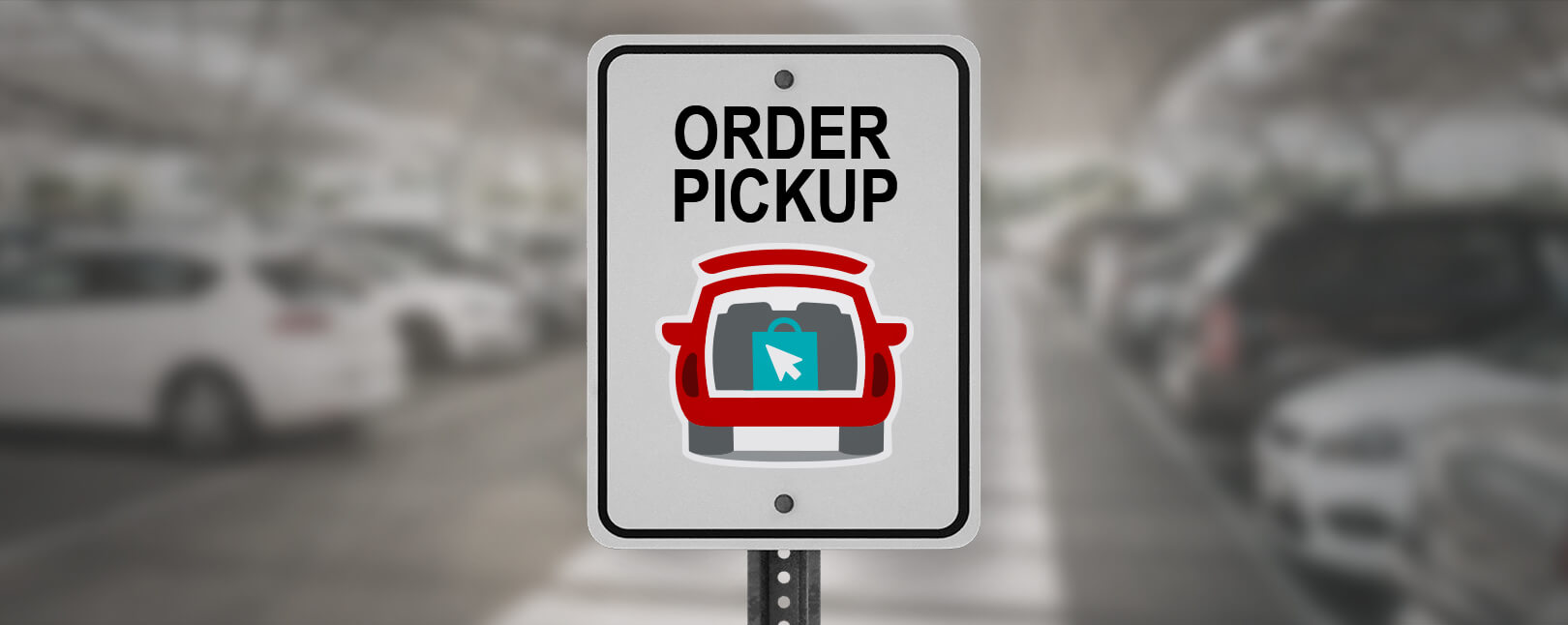How the ‘Buy Online, Pick Up In-Store’—or BOPUS—Model is Transforming Commerce
Convenience shopping is the next big thing in commerce. This is especially true in the post-pandemic landscape.
Customers have grown accustomed to alternative shopping methods, like the “buy online, pick up in-store” (BOPUS) model, which make life easier and more convenient. After all, what could be simpler than ordering an item online and picking it up curbside on your way home from work?
In this article, we’ll explain what BOPUS is and how it can benefit your business. We’ll also examine how to get started, and how to protect yourself in the process.
Recommended reading
- Card-Not-Present Transactions: Know the Risks & Rewards
- Top 7 Customer Returns Reasons in 2024 & How to Avoid Them
- Online Shopping vs In-Store Shopping: the Future of Retail?
- eCommerce Order Tracking: Provide the Best CX Possible
- How “Super Apps” May Help Better Serve Your Customers
- eCommerce Delivery: A Strategy Guide to 2024 Best Practices
What is BOPUS?
- Buy Online, Pick Up In-Store
The “Buy online, pick up in-store,” model often abbreviated as “BOPUS,” is a shopping method by which customers can browse for goods and make purchases online. The buyer can then pick those items up from the retail provider’s location, rather than wait for delivery like conventional eCommerce.
[noun]/* bī • än • līn • pik • ǝp • in • stôr/
BOPUS is a reasonably straightforward concept. Customers browse for items they like online, and then tap a few buttons on their smartphone or other device to order and pay for them. The customer then selects ‘pick up in-store’ from a list of delivery options and sets a time for fulfillment. Easy peasy.
It’s so easy, in fact, that in-store pickup options are rapidly outpacing other shopping methods. Indeed, the data indicates that buy online, pick up in-store options are becoming increasingly popular. According to Business Insider, nearly 70% of US consumers prefer BOPUS options to make purchases, and 50% choose retailers based on whether they offer it.
Is BOPUS worth the long-term investment for your business, though?
Why BOPUS? The Benefits of Buy Online, Pick Up In-Store Options
As a merchant, you know your payment and delivery options are key to a good shopping experience. The more options you give your customers, the more likely they will be to return to you for future purchases.
BOPUS offers many benefits for businesses of any scale:
#1 | Increase Traffic
As mentioned above, 50% of US shoppers will be more likely to patronize a store simply because it features BOPUS options. The reasons for this are manifold. But, according to Shopify, consumers love the convenience of ordering items and not having to pay for shipping.
Buyers like that they can touch and see the items before they take them home. They also appreciate the ability to return the items immediately if they aren’t what the buyer expected.
BOPUS can also boost traffic to your online website or increase the number of downloads for your mobile app. When consumers subscribe to your online channels, you have more opportunities to send promotional content or advertise deals through the mobile app.
Pro Tip:
Allowing customers to create accounts and profiles on your website will improve browsing habits and make personalized promotions possible for each customer. BOPUS allows for finer, more detailed data collection.
#2 | Increase Sales
75% of shoppers who have patronized your store for BOPUS options are likely to make additional in-store purchases when they arrive. Furthermore, nearly 70% of consumers indicated they made additional purchases after utilizing BOPUS through a retailer.
The data is clear: giving shoppers the option to purchase online, and pick up in person will drive sales.
Pro Tip:
BOPUS options allow retailers the opportunity to upsell frequently purchased options at checkout. Take advantage of this by incorporating other offers into the checkout process.
#3 | Improve Customer Experience
The best part of BOPUS is how happy it makes your customers. Having the convenience to browse and make purchases online without waiting a week or more for delivery, combined with the prospect of zero shipping costs? It’s a win-win for consumers and retailers.
It’s true that many consumers still prefer to shop entirely in-store or online. However, many will appreciate the extra mile you’re willing to walk to provide them with every available purchasing option, even if they don’t use it.
Pro Tip:
Providing a streamlined shopping experience allows retailers to inform customers when items are out of stock, upgraded, or if and when similar items are available. This will lead to fewer disappointed buyers, and higher conversion rates.
#4 | Simplify Returns
Probably the best part of a BOPUS option is the customer’s ability to immediately return anything they don’t like without hassle. This translates to a lower likelihood of chargebacks and other return policy headaches, which are staples of the eCommerce landscape.
Pro Tip:
Include any return policy information at the BOPUS checkout portal to expedite returns. Also, linking related items in the user portal might encourage customers to exchange for substitutes rather than shop elsewhere for replacement items. This lets you recover sales more easily.
#5 | Optimize Inventory Management
Buy online, pick up in-store options can streamline and improve retailer inventory management. It lets you keep an up-to-date, digital tally of available items, incoming items, and outgoing items. This process is faster and far less complicated via online management systems that can pair with your CRM and POS software.
Additionally, better inventory cataloging can also enable faster and more accurate fulfillment and shipping, which can be communicated to customers in real-time. When a customer orders an item via BOPUS, a speedier system allows you to notify them when their item is available for pick up with far fewer mistakes.
Pro Tip:
Connecting your online store with your internal inventory management system can alert customers of limited inventory and even allow you to target ad campaigns that reflect your inventory at any given time.
5 Real-World Examples of BOPUS in Action
Given recent and overwhelming spikes in consumer demand, many major retailers are already onboard—and reaping spectacular rewards—with BOPUS. Like we discussed above, the more payment and delivery options you offer your customers, the more likely they’ll be to choose you over a competitor.
Here are some prominent examples of retailers who’ve embraced BOPUS retail:
#1 | Apple
Apple offers three pickup options:
- In-Store Pickup
- Express Pickup
- Curbside Pickup
Whether you’re coming to the store or parking curbside, they will guide you through the pickup process step by step with emails and notifications. They will also send information about scheduling online personal sessions and returning trade-in devices.
Apple offers additional incentives to purchase with them directly, and runs annual sales that can be a massive draw for loyal customers.
#2 | Best Buy
Best Buy offers curbside and in-store pickup options. They, too, will notify you when your order is ready and provide you with up-to-the-minute instructions and details to make the process as hassle-free as possible. They will also price-match upon pick up, if you manage to find the item in question at a lower price somewhere else.
Best Buy themselves have indicated that a substantial portion of their online orders are BOPUS-originated.
#3 | Home Depot
One might say that Home Depot, as well as their counterpart Lowe’s, were at the forefront of the BOPUS option. Both retailers have featured “call-ahead” and advanced online pick up options for years. WIth either option, customers could select a pickup designation and the item would either be available at the counter or curbside.
Nowadays, Home Depot mainly provides online order pickup via their own app. They also issue real-time notifications and advanced check in, all from the same digital platform.
#4 | Target
Target provides customers with their own app which is free to download through Google Play or the Apple App Store.
Through the app, shoppers can see what items are out of stock, see similar items by price, and even locate items in separate Target locations for pickup. The company also provides in-app special offers, which Target shoppers can take advantage of to save money while shopping in-store, or in the app.
#5 | Walmart
As arguably the largest retailer on this list, Walmart prides itself on its ability to offer consumers exactly what they want, exactly how they want it.
With multi-tiered delivery and pick up options to choose from, customers can decide to have something delivered same or next-day, or pick up their items for no additional cost either curbside or in-store. Selections are made during the checkout process, with just a few taps in the Walmart app.
How Personalization Enhances the BOPUS Experience
Now that we have an idea of how BOPUS can improve your business... let’s talk about personalization.

Contemporary customers expect more than hassle-free shopping experiences. They seek dynamic shopping experiences with a plethora of delivery and pick-up options. As an online integration, BOPUS works best when paired with intuitive technology like Augmented Reality (AR) and Virtual Reality (VR) that deliver advanced personalization.
This means the shopping method is most functional when it's customizable.
AR, for example, gives customers the ability to see items they are browsing in their own homes, on their walls, on their counters, etc. It accomplishes this in a way that a simple picture could never hope to do. Once the item has been selected according to size, color, pattern, or design, the customer can \choose how they’d like to pay and receive the item. And, with BOPUS, they get to see it in person before taking it home.
Some other ways personalization can diversify BOPUS consumer options include:
- COPUS (customize online, pick up in-store)
- Better promotion targeting
- Improved rebranding
- Ability to engage directly with shoppers (clienteling)
- Geolocation-enabled ad targeting
To get the most out of personalization, it’s essential to be aware of—and open to—exploring emerging software. This technology can deliver predictive analytics and improve real-time decisioning. With tech like this, in-store staff can better guide hesitant shoppers to an immersive and private online shopping experience. Here, they might build their ideal items, then return to the store to pick it up, saving themselves shipping fees and hassles.
Predicting consumer behavior is only one part of the process. The next is implementation.
How to Build a BOPUS Model
If you’re ready to implement a buy online, pick up in-store option, there are a few ways to integrate it with your business successfully:
#1 | Train Your Staff
The first and last human interaction your customers will have in your store may be with a member of your staff. BOPUS options require specific processes outside the norm for many retailers. It should therefore be thought out and planned with extreme care.
Who will handle the majority of BOPUS orders? Where will items be packaged and prepared for pick up? Who will be in charge of this process? Will you have a space designed for BOPUS pickups, or will customers be required to see a cashier to arrange it? These are just a few of the questions that you—and your employees—should be able to answer before you tackle BOPUS.
#2 | Integrate an App or Online Portal
Where will your customer do most of their shopping, and how will you integrate that online component with your internal CRM and POS systems? Additionally, you will need to be up-to-date on the latest shopping app technologies and how they might enhance the shopping experience at your store.
Make sure any apps you use are mobile- and browser-friendly!
#3 | Designate a Pickup Location
Do you have multiple stores or locations from which customers can pick up their items? If you have only one location, at what time of day or evening can the customer pick up their items? This logistical information is crucial to a successful BOPUS experience and should be well thought out in advance.
The pickup area also needs to be clearly marked. Customers should know where to go as soon as they arrive on site.
#4 | Optimize Your Marketing Efforts
Use the fancy new software you picked up to begin your BOPUS journey. It gives you the power to use advanced analytics, geolocation, and even app-tracking to ensure you’re providing your customers with actionable promotions that are most relevant to them.
Aside from personalized marketing, you should remember to run dedicated promotions for your BOPUS platform. Buyers should get reminders about BOPUS offerings fairly regularly for the best overall results. A series of targeted ads and social media campaigns are a great place to start.
#5 | Set Fraud Controls
Adopting anti-fraud processes during checkout can eliminate many major fraud attacks. You should have multiple, complimentary tools which work in tandem with one another as part of a broader strategy. Some of these are as follows:
- Address verification
- CVV verification
- Geolocation
- Fraud Scoring
- Blacklisting
- Machine Learning
The more antifraud methods you have in place, the better. While a skilled fraudster might have a way to defeat one of two of the examples above, it is doubtful that they will be able to beat them all.
#6 | Implement Augmented Reality Where Appropriate
Augmented reality is much more than a nifty novelty. You can use augmented reality to let customers preview how goods will look in their home.
Take the Ikea Place app, for instance; this app lets buyers virtually ‘place’ furnishings in their space. Shoppers looking for furniture, decor, or other items can experience their home with items they have not yet purchased. Buyers can even use this technology while shopping in store, thereby augmenting the in-store experience as well.
So, there you have it. BOPUS is a popular shopping method for myriad reasons, all linked to customer convenience and experience.
All that said, we need to keep something in mind here. By embracing BOPUS, you’re introducing more card-not-present elements into your customer experience. This will necessarily put you at a higher risk for fraud and chargebacks.
Protecting Your Business From BOPUS Chargebacks
Accepting card-not-present payments involves a baseline of risk. You can’t see the buyer’s payment card at the time of purchase. This makes it more difficult to verify the buyer.
Criminals can take advantage of this. For instance, a fraudster may use stolen cardholder information to complete an online transaction, then appear in-store to pick up the goods. By the time the fraud is discovered, the perpetrator is long gone.
This is not the only threat present. Friendly fraud, for instance, is endemic to the card-not-present space. These attacks can be extremely hard to detect, manage, and recover from.
Buy online, pickup in-store commerce can be a great source of revenue. If you want to be successful, though, protecting your business from fraud and chargebacks needs to become a higher priority than ever before.
When paired with antifraud prevention methods, effective chargeback management can be the solution you’re looking for. Allow our experts to help you craft a successful BOPUS-centric strategy that keeps your business safe from fraud and chargebacks. Continue below and book your free demo today.












